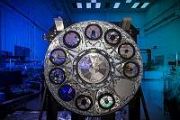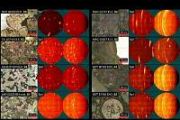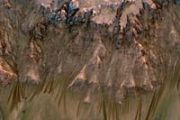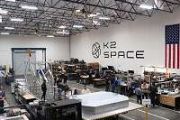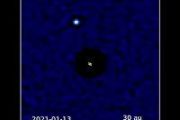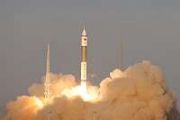
Copernical Team
Science with Euclid
 Video:
00:01:00
Video:
00:01:00
Discover the top five mysteries ESA’s mission Euclid will help solve.
ESA's Euclid mission is designed to explore the composition and evolution of the dark Universe. The space telescope will create a great map of the large-scale structure of the Universe across space and time by observing billions of galaxies out to 10 billion light-years, across more than a third of the sky. Euclid will explore how the Universe has expanded and how structure has formed over cosmic history, revealing more about the role of gravity and the nature of dark energy and dark matter.
A practical method to improve the accuracy of orbit prediction and position error covariance prediction
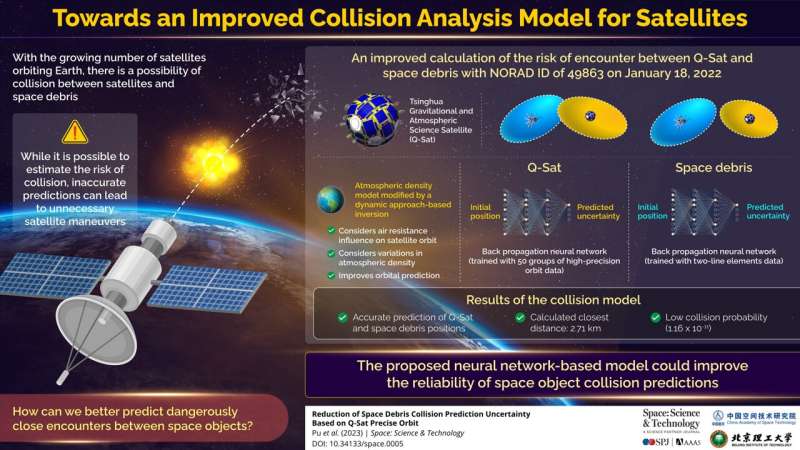
With continuous developments in the space industry, the space near the Earth is occupied by a variety of spacecraft whose number is increasing dramatically every year. To avoid a collision, huge computation power is necessary to determine the possibility of a collision between two space objects. However, there are various uncertainties in the collision prediction process, which aggravates the burdens on space safety management.
Since the collision probability is usually applied to evaluate a dangerously close encounter, improving the precision of orbit prediction and covariance prediction is key.
In a research paper recently published in Space: Science & Technology, Zhaokui Wang, from Tsinghua University, proposed an efficient method with a back propagation (BP) neural network to improve the accuracy of orbit prediction and position error covariance prediction of space targets.
Wang's team also applied the proposed method to estimate the collision probability for the Q-Sat and space debris with NORAD ID of 49863.
Improving the accuracy of orbit prediction and position error covariance prediction
 With continuous developments in the space industry, the space near the earth was occupied by a variety of spacecraft whose number is increasing dramatically every year. To avoid a collision, huge computation power was spent to determine the possibility of a collision between two space objects. However, there were various uncertainties in the collision prediction process, which aggravated the bur
With continuous developments in the space industry, the space near the earth was occupied by a variety of spacecraft whose number is increasing dramatically every year. To avoid a collision, huge computation power was spent to determine the possibility of a collision between two space objects. However, there were various uncertainties in the collision prediction process, which aggravated the bur Integral safe at last
 In 2020, the thrusters on ESA's Integral spacecraft failed. To keep the scientific mission alive, the Integral team at ESA's ESOC mission control centre quickly set to work developing a new series of specialised manoeuvres that would enable them to continue flying the spacecraft using only its reaction wheels - the rotating wheels inside a satellite that allow it to store and use angular momentu
In 2020, the thrusters on ESA's Integral spacecraft failed. To keep the scientific mission alive, the Integral team at ESA's ESOC mission control centre quickly set to work developing a new series of specialised manoeuvres that would enable them to continue flying the spacecraft using only its reaction wheels - the rotating wheels inside a satellite that allow it to store and use angular momentu LeoLabs and ClearSpace partner to advance a safer, more sustainable space environment
 LeoLabs, the world's leading commercial provider of low Earth orbit (LEO) Space Situational Awareness and Space Traffic Management services, has announced a memorandum of understanding (MOU) with ClearSpace, the Swiss-based, in-orbit satellite servicing company. The MOU recognizes the two companies' shared vision of a safe and sustainable space ecosystem and their mutual efforts in making this v
LeoLabs, the world's leading commercial provider of low Earth orbit (LEO) Space Situational Awareness and Space Traffic Management services, has announced a memorandum of understanding (MOU) with ClearSpace, the Swiss-based, in-orbit satellite servicing company. The MOU recognizes the two companies' shared vision of a safe and sustainable space ecosystem and their mutual efforts in making this v Galaxy clusters yield new evidence for standard model of cosmology
 Cosmologists have found new evidence for the standard model of cosmology - this time, using data on the structure of galaxy clusters.
In a recent study, a team led by physicists at the Department of Energy's SLAC National Accelerator Laboratory and Stanford University made detailed measurements of the X-ray emission from galaxy clusters, which revealed the distribution of matter within the
Cosmologists have found new evidence for the standard model of cosmology - this time, using data on the structure of galaxy clusters.
In a recent study, a team led by physicists at the Department of Energy's SLAC National Accelerator Laboratory and Stanford University made detailed measurements of the X-ray emission from galaxy clusters, which revealed the distribution of matter within the Ready for Software Upgrade Sols 3786-3788
 An issue at a Deep Space Network station prevented the Sol 3785 plan from being sent to Mars, so none of those planned activities occurred. But the rover is in a good location and orientation for the software upgrade that is planned for next week, so no driving is included in the Sol 3786-3788 weekend plan. Similarly, no arm motion is allowed in the weekend plan, to ensure that MSL is ready for
An issue at a Deep Space Network station prevented the Sol 3785 plan from being sent to Mars, so none of those planned activities occurred. But the rover is in a good location and orientation for the software upgrade that is planned for next week, so no driving is included in the Sol 3786-3788 weekend plan. Similarly, no arm motion is allowed in the weekend plan, to ensure that MSL is ready for Privately built, liquid-fuel rocket first in world to reach orbit in debut flight
 The TL 2, a carrier rocket developed by Space Pioneer, reached orbit on Sunday afternoon, becoming the first privately built, liquid-fuel rocket in China to reach orbit.
The rocket blasted off at 4:48 pm from the Jiuquan Satellite Launch Center in northwestern China. Shortly after, it placed a remote-sensing satellite in a sun-synchronous orbit about 500 kilometers above the Earth, Space P
The TL 2, a carrier rocket developed by Space Pioneer, reached orbit on Sunday afternoon, becoming the first privately built, liquid-fuel rocket in China to reach orbit.
The rocket blasted off at 4:48 pm from the Jiuquan Satellite Launch Center in northwestern China. Shortly after, it placed a remote-sensing satellite in a sun-synchronous orbit about 500 kilometers above the Earth, Space P Japan postpones H2A rocket launch after H3 failure
 Japan will postpone an H2A rocket launch originally scheduled for May until August or later, the nation's space agency said on Friday.
The decision was made as the rocket shares components in second-stage engines with its successor H3 rocket, which was forced to self-destruct shortly after takeoff in March.
According to the Japan Aerospace Exploration Agency (JAXA), the 57-meter H3 r
Japan will postpone an H2A rocket launch originally scheduled for May until August or later, the nation's space agency said on Friday.
The decision was made as the rocket shares components in second-stage engines with its successor H3 rocket, which was forced to self-destruct shortly after takeoff in March.
According to the Japan Aerospace Exploration Agency (JAXA), the 57-meter H3 r ISRO conducts the Reusable Launch Vehicle Autonomous Landing Mission
 ISRO successfully conducted the Reusable Launch Vehicle Autonomous Landing Mission (RLV LEX). The test was conducted at the Aeronautical Test Range (ATR), Chitradurga, Karnataka in the early hours on April 2, 2023.
The RLV took off at 7:10 am IST by a Chinook Helicopter of the Indian Air Force as an underslung load and flew to a height of 4.5 km (above MSL). Once the predetermined pillbox
ISRO successfully conducted the Reusable Launch Vehicle Autonomous Landing Mission (RLV LEX). The test was conducted at the Aeronautical Test Range (ATR), Chitradurga, Karnataka in the early hours on April 2, 2023.
The RLV took off at 7:10 am IST by a Chinook Helicopter of the Indian Air Force as an underslung load and flew to a height of 4.5 km (above MSL). Once the predetermined pillbox 
















